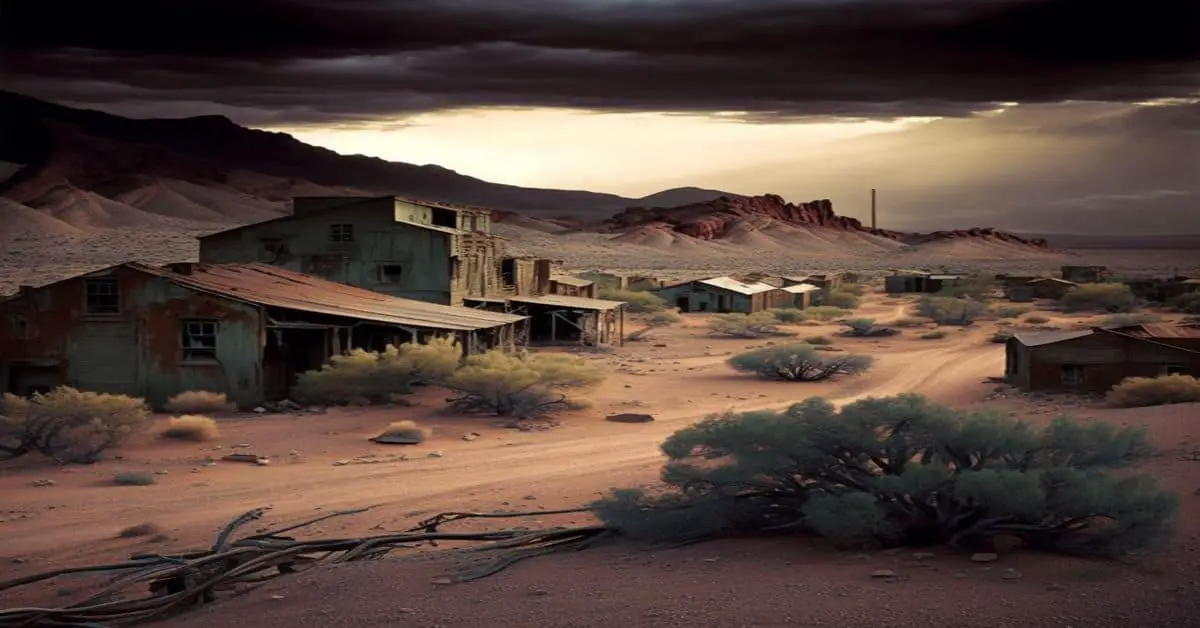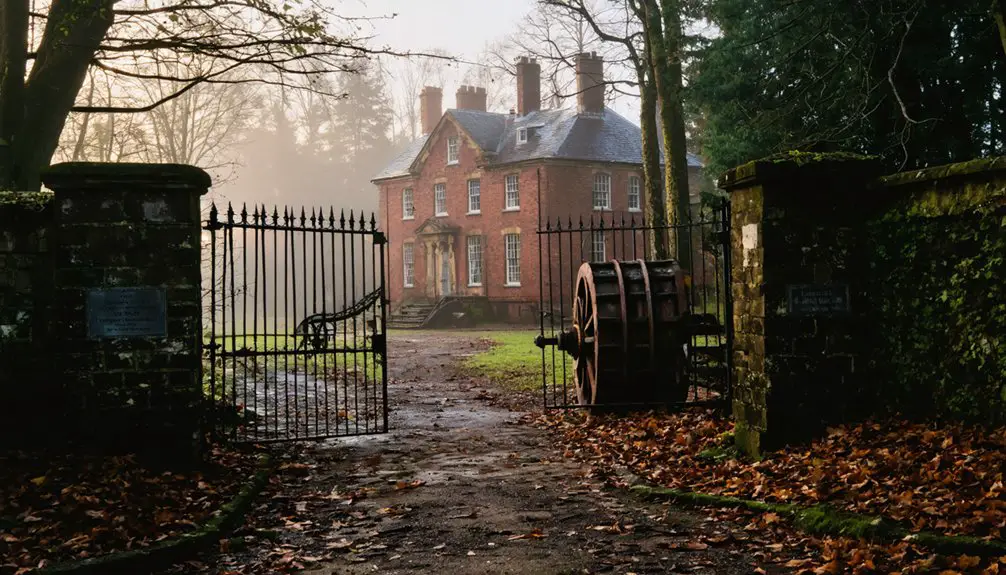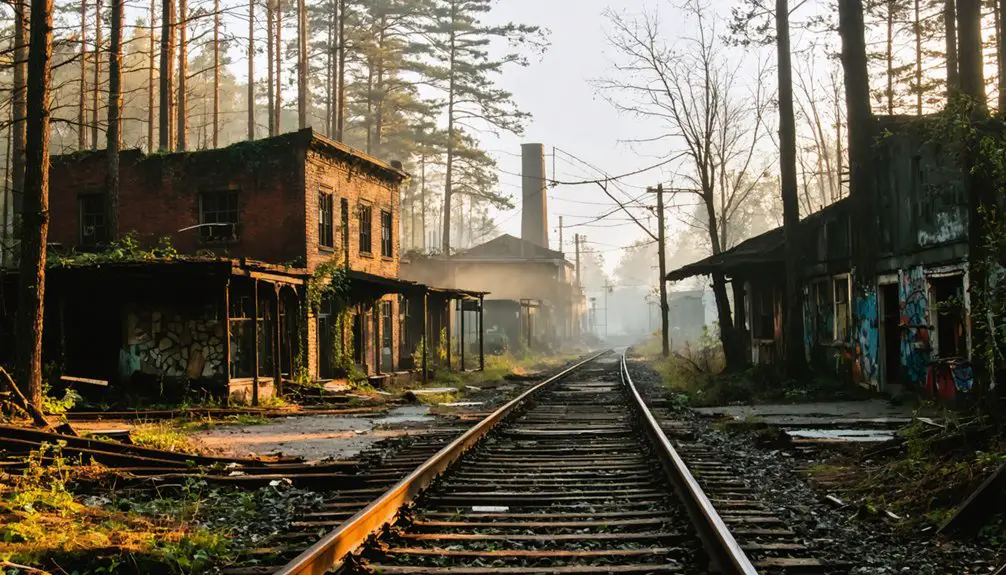New Jersey followed Delaware and Pennsylvania in statehood when it joined the union on December 18, 1787, as the third state of the United States.
There are 28 ghost towns in New Jersey. Most of the abandoned locations can be found in the northern part of the state and the southeastern location near the Atlantic coastline.
The first European settlement established in New Jersey was a Dutch town named Bergen in 1660. The area was often referred to as New Netherlands when the settlement was founded. However, in 1664, the British overtook control of the land and added the territory to their colonies. Thus, the oldest town in New Jersey, Woodbridge, can be dated to the mid-1600s.
Batsto Village, New Jersey
Batsto Village was a community built around a mining operation in the Washington Township in Burlington County. Founded in 1687, the small village of Batsto continued to grow upwards of hundreds of residents as iron mining remained profitable.
In 1766, the ironmaster Charles Read built Batsto Iron Works along the Batsto River, where many bog ores were discovered. Bog ore, impure iron deposits, develops by chemical and biochemical oxidation.
Batsto Iron Works was sold to John Cox in 1773. Cox used the facilities to produce cooking pots, kettles, and other household items. During the American Revolution, Batsto Iron Works manufactured supplies and other goods for the Continental Army.
Batsto Iron Works was sold in 1779 to Joseph Ball with a controlling interest purchased by Ball’s uncle William Richards in 1784. William Richards worked as the ironmaster until retiring in 1809.
Jesse Richards, William’s son, took on the title of ironmaster until 1854 when he died. Jesse’s son Thomas Richards succeeded in his place and ran the company through the mid-1800s until the demand for iron started to decline.
Most Batsto Village was developed when the Richards family operated the Batsto Iron Works. With the declining need for iron, Thomas Richards changed gears and started working on glassmaking. Unfortunately, after 91 years of the Richards family successfully running the town and ironworks facilities, glassmaking did not take off as a profitable business. As a result, the town soon fell into bankruptcy.
Joseph Wharton, a businessman from Philadelphia, purchased the declining town of Batsto and became involved in agricultural projects, forest projects, cranberry farming, and establishing a sawmill. Wharton died in 1909. After his death, Wharton’s properties were managed by the Girard Trust Company, a bank in Philadelphia.
In 1958, New Jersey purchased all of Wharton’s land and buildings with plans to restore the 50-room mansion in the middle of Batsto, rebuild the dam on the lake, and open it for visitors in 1961 as a historic village within the Pine Barrens.
In 1971, Batsto Village was added to the National Registry of Historic Places. There are more than forty structures still standing in the historic town, including a charcoal kiln, carriage houses, stables, ice and milk houses, a blacksmith, a general store, a gristmill, and a wheelwright shop.
Crossley, New Jersey
In the 1800s, Crossley started as a clay-mining community in the Berkeley Township in Ocean County. The town remained active in producing terracotta pottery, bricks, and pipes through the early 1900s until George Crossley, owner of Crossley Clay Works, sold the company to the Cypress Land Company in the 1920s. The Cypress Land Company then sold the property to the New Jersey Natural Lands Trust which then established the Crossley Preserve spanning the 251 acres of the township.
The former town of Crossley can be found in the Pine Barrens, with the abandoned townsite boasting historical and cultural sightings used for environmental education, recreation, and an endangered species protection location.
A 1.5-mile stretch of the Thomas F. Hampton Memorial Trail follows an abandoned railroad that was once used to haul open-mined clay from the open pits to the town of Crossley before being loaded onto rail cars to travel on the former Pennsylvania Railroad.
There are signs along the trail that identify Crossley ruins, the deserted mining pits that have turned into ponds, and other artifacts, animal, and plant information.
Double Trouble, New Jersey
Double Trouble is a historical village that was added to the National Registry of Historic Places in 1978. The town earned its name after muskrats breached a local dam twice in one week. It thrived as a cranberry farm and packing plant during the town’s peak. In 1909, the Double Trouble Company was established, focusing on timber sales, millwork, and cranberries.
After restoration projects were completed in the late 1990s, visitors to the town could see cranberry bogs, sawmills, general stores, a schoolhouse, a cranberry packing and sorting plant, and other structures. In addition, the Double Trouble State Park Nature Trail offers a 1.5-mile loop along the New Jersey Coastal Heritage Route.
Feltville, New Jersey
Feltville was first settled in 1736 by Peter Willcox, an Englishman. It wasn’t until 1844 when David Felt purchased land from Willcox’s descendants in New Jersey for a second mill to meet production demands that Feltville was established.
David Felt moved from Boston to New York City in 1825 and opened a mill to supply merchants with needed materials. As New York City grew, the demand for Felt’s supplies increased, and a second mill was necessary.
The land Felt purchased from Willcox’s family line was developed into a small working community with a mill on Blue Brook, two dams, and a small village for the mill employees. Felt named the town after himself while earning the title of “King David” from the residents due to the mandatory attendance required at church services and educational classes in a one-room schoolhouse for all the children.
Within six years, by 1850, Feltville had a population of 175. However, living facilities could get cramped as it was expected to host four families in larger home structures and two families in each of the smaller homes.
Felt sold the townsite property in 1859, but none of the purchasers could develop a successful business or thriving community. Feltville soon became known as the deserted village until 1882, when Warren Ackerman bought the site and turned it into the summer resort of Glenside Park.
Glenside Park was successfully operational for a short time, but it did not last long before the New Jersey shores became increasingly popular. Deserted again, the Union Country Park Commission bought the land and added it to the Watchung Reservation.
Not many of the original town structures are still standing today. However, the foundation of the mill is visible next to Blue Brook. Other buildings have been part of a preservation effort to show visitors how life once was at the town’s peak performance. In October, tourists can take a haunted hayride through the city to learn more about its history.
Foul Rift, New Jersey
There is nothing left to be seen of Foul Rift, but at one time, it was a community established on the east bank of the Delaware River about two miles south of present-day Belvidere. As campsites turned to summer cottages and eventually year-round residences, settlers of Foul Rift purchased land from William Penn’s heirs in the 1740s.
In 1814 the Rifton Mills were built to use the power of the rapids from the river. The mills were operated for 42 years until a fire destroyed them in 1856. Flooding between 2004 and 2006 destroyed 24 of the 28 cottages. In 2008, Pennsylvania Power and Light removed the last four cottages that remained standing from the property.



